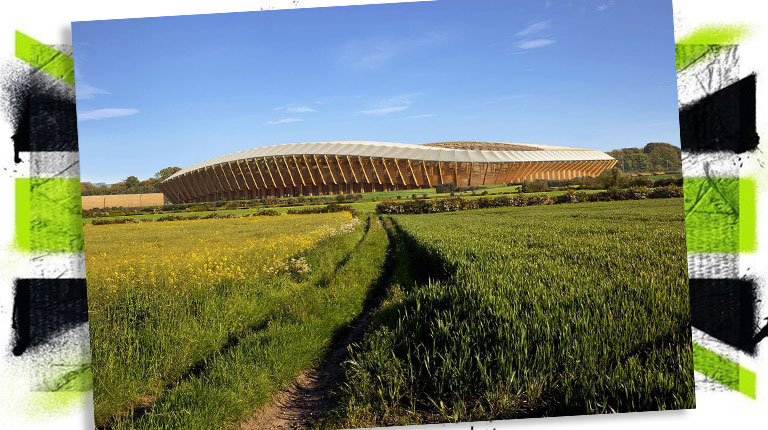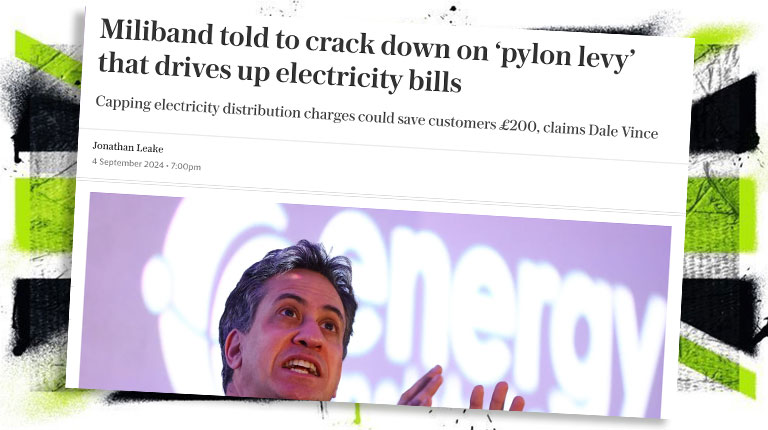Green Gas can save our boilers and get us away from fossil fuel gas

Last week we launched a new campaign with the Daily Express – not only is that counter intuitive (the partner) but the campaign was too – Save our Gas Boilers…!
And the reaction on social media made that plain – with accusations of me being a sellout to the fossil industry, to being back on the weed….to this being a ‘dangerous plan – thanks George (Monbiot)…….![]()
Our main proposition is that we should keep our gas boilers and not use heat pumps to heat our homes.
And I get that it’s a very challenging thing to say – it goes against conventional wisdom – my all time favourite Oxymoron. For those that read the article we make clear that it’s about swapping fossil gas for green gas – and we expose some very important limitations of heat pumps.
What we didn’t have ready at that time was a document with the background calculations and assumptions. That took a few days what with the energy crisis and all that.
But it’s here now – take a look and see what you think.
Am I a sell out, on drugs or just dangerous…….or have I come up with a Another Way to heat homes, get to zero carbon, create a new industry and save a shed load of money….?
There are 28m homes in Britain.
Some 80% of them are on the gas grid = 22m homes.
Hydrogen should take 20% of the heat load for these, leaving 18m homes (equivalent) that need mains gas for heating. Or a heat pump. Off (gas) grid homes also need a solution – these numbers are just for grid connected homes.
Our first green gas mill is rated 5MW, cost £10m and uses 3k acres to heat 4k homes – that’s 0.75 acres per home.
Energy efficiency (insulation) will reduce this to 0.5 acre per house.
Therefore gasmills this size could do 6k homes with energy efficiency.
Therefore we would need 3k gasmills to provide for 18m homes.
3k gas mills will cost £30 billion at the price of our first project. There should be cost reductions, but let’s ignore them.
Each Gasmills brings 30 or so jobs – so 90k jobs created in the rural economy and a fossil free gas grid for home heating, for £30 billion.
But for that 30 billion we get the actual gas for those homes, which will be paid for, as it is now – it’s 30 billion to build the ability to make and sell green gas for all British homes (on the gas grid). £30 billion to swap fossil gas for green gas – and build an entire new industry and source of energy.
18 million homes spending £700 a year each on gas is over £12bn worth of gas each year – at retail prices.
The heat pump option;
An Air source heat pump installation costs about £8k per house. For the same 18m homes that is £150 billion.
For that 150 billion we don’t get the fuel to heat those 18m homes – we get the machinery to use the fuel to heat the homes – we have to make the fuel. That requires a trebling of electricity production for homes.
Based on this – (OFGEM stats) – typical home electricity consumption is 3k units and typical gas is 12k units.
Air source heat pumps are quoted to have a COP (Coefficient Of Performance) of between 1 and 3 – meaning for every unit of electricity you put in you get between 1 and 3 units of heat back out.
Sounds like a magical energy making machine…..but the range is key – air source heat pumps extract heat from the air, they are most efficient when the air is warmest and least when it is coldest. The COP of 3 comes in summer when we need heat the least, the COP of 1 comes in winter when we need it the most. This is also key. In winter our demand for gas in homes increases six fold over summer. And in the cold weather the COP of a heat pump will be 1 – meaning one unit in and one unit back out. No gain.
It’s very difficult to find an annual average COP for an air source heat pump -real world figures. I’ve not been able to. And so have used the figure of 2 as a simple average of the range 1 -3. One unit in two back out.
I think it’s likely the best case, given the seasonal nature of heat demand (six times higher in winter).
With a COP of 2 for and a house using 12k units of heat you need 6k units more electricity for each heat pump home. 9k units of electricity in total for that house instead of 3k. Therefore we need three times as much renewable electricity as we do now, to get to 100% on the grid – if we swap gas for electricity in home heating.
A typical solar project will make 1m units per 1MW installed – that will power nearly 300 gas heated homes or 100 heat pump powered ones.
1MW of solar costs £500k to build.
18m homes using 6k more units of electricity each is 110 billion units of power, additional.
That’s 110k MW of solar. At a cost of £55 billion – then we have the power to feed the heat pumps and the comparison becomes closer.
But we also need to upgrade the grid to enable this trebling of electricity to be delivered – we can only guess at that – it will be in the high tens to hundreds of billions. Treble is a very big increase in demand – and the peak of that demand will land in the peak of all demand – winter.
So £200 Billion to install heat pumps and make the energy to feed them – plus another, call it £100 billion for the grid.
Versus £30 billion to build 3k gasmills and provide green gas through the existing grid to the existing appliances – of 18m homes.
Call it £30 billion versus £300 billion and you won’t be far out.
Heat pumps costs more to run too – pre this weeks energy crisis Bloomberg published a report citing £400 per house higher energy bills with a heat pump versus gas, for 18m homes that’s an added £7 billion to our national energy bills…..every year.
Can we make enough gas for all 18m homes – it’s a question of land use;
In Britain we have 23 million acres of land in farming (75% of our entire country) – of this 60% is used for grazing animals, mostly cows and sheep – some 14 million acres.
We need 9 million acres to power 3k green gasmills. (3k acres x 3k gasmills)
That’s roughy two thirds of grazing land, but it doesn’t require a meat consumption/production reduction of two thirds – because 85% of animals raised by farmers in Britain live their lives indoors, in factory farms. Just 15% are grazed.
And so the two thirds of grazing land we need to re purpose to make gas would result in a meat production reduction of just 10% (2/3 of 15%). It’s a crude measure given cows weigh more than chickens….
The government’s Climate Change Committee has recommended a 20 to 50% reduction in meat consumption to get to zero carbon as a country.
The recent Dimbleby National Food report for government recommended 30%
Meanwhile in the last ten years red meat consumption has dropped 30% anyway.
And we need a 1% drop per year for ten years, to re purpose enough land to make enough gas for all 18m homes. Doesn’t seem like much to ask. It’s well under the lowest estimates for reduction of meat consumption that we need – to enable our zero carbon targets.
Animal grazing is a marginal business (economically) and farmers need to diversify – swapping animal grazing for grass production for gas – is an ideal option.
We get zero carbon gas, a huge degree of energy independence, 100k rural jobs, farm diversification and a massive economic boost.
Grazed animals are also the worst for human health (red meat) and climate contribution – via methane. A two thirds reduction in grazed animals will also bring a reduction in methane from farming (not found those figures yet).
No downsides that I can see.







